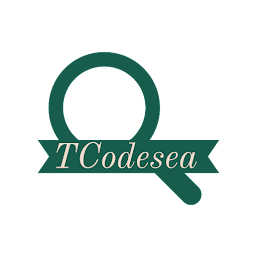Product Costing, Part of the Controlling module which used to estimate the intrinsic cost of materials and production for profitability and management accounting. Product Costing is a niche skill. Due to costing’s high-level integration with other modules, many people avoid it due to the complexity. This 5 part article will seek to simplify Product Costing.
Product
Cost Planning
1 1. Raw material cost
2.
Packing material cost
Cost
Determination:
|
Product
Cost Controlling Module Controlling Purpose Product Costing |
The fourth step in understanding the basics of product costing is the costing run. Costing runs are used to evaluate the mass of materials in a single company/Plant code. The costing run allows you to select certain materials, explode their quantity structure, cost, analyze, and mark and release.
Product Costing
Prerequisites:
Material Masters (including MRP, Accounting, & Costing views) With Quantity Structure
(Bill of Materials, Routing
or Master Recipe, Production Versions are optional)
Purchase Info Records and Condition Types
Configuration (Cost Component Structure, Costing Variant,
Valuation Variant, Costing Sheet if required)
CO Master Data (Elementary and secondary cost elements, type of operation, various costs and variations on request, additional costs on request)
Overview:
During the annual or monthly pricing process, materials are placed in a single value. CK40N transactions are used to process costs, analyze results, and target costs as well as calculation. Cost operations must be performed using different prices (read more in the configuration section), price versions, control areas, company codes, and transition controls. Therefore, expensive operations can only be done for one company code at a time. Value runs are also performed for specific date ranges.
CK40N
The costing process consists of six steps: selection, blasting the structure, costing, analysis, labeling, and marketing. Each step requires you to enter parameters, save and then execute. Selection parameters are entered that indicate which materials should be cost-effective. In the explosion phase under construction, the selected materials will explode to extract the constituent materials from the BOM.
As explained in the previous blog about the quantitative structure, a material sheet (BOM) is created for each domestically produced material. In the cost phase, good materials selected from the previous phase are evaluated based on components, main paths, or synthesis. A routing formula or basic formula has also been developed to define the processes required for the content. The cost of component materials is also calculated based on cost adjustments.
You can analyze the costing results using the reports available in the analysis parameters. During the labeling phase, the cost and duration of the unlock is another way to allow the company code to be labeled. After recording, the costs are reflected in the inventory of the projected standard cost estimates. After coding, publish the cost results. The price is valid for a certain period of time after it is issued and appears in the general ledger as a current standard cost estimate.
After each step, it is important to review the error log and correct the error. Once you have resolved the error in a specific step, repeat each step from the beginning to see the results. If the results are not updated after launch, you can click the update button. If you prefer to process large amounts of content or take a step on a specific date and time, you can respond to any backstory.
Configuration:
Cost adjustments, pricing changes, and pricing adjustments are needed to establish a content pricing strategy. Standard price changes. Set the casting type for the different values as well as the variables to be included in the evaluation. Various assessments include evaluating cost estimation parameters. In the Assessment type, you can specify how to select a policy set value. To create the content, you can choose the standard price of the component, the average moving price, the recorded value from the purchase information, or the default price. You can select a specific project / original version and then select the activity level for the annual average or current operating rate. The structure of cost components is used to indicate whether variables or aggregate values should be included, and group values should be included in logical groups, also known as cost factors.
Relatable Example:
Let’s say we are using Product Costing to value our inventory in a cookie baking shop. This will help us value our cookies (finished good), frosting (semi-finished good), and baking items like eggs, milk, and sugar (raw materials).Using the costs for each ingredient (Material Master) in our ingredient list (BOM) and the rates for activities in our recipe (Routing or Master Recipe), we can calculate the cost of producing a cookie. In costing our cookies, we will cost the ingredients. Once we are satisfied with our standard cost, we can choose to value our inventory at that cost (release).
Further information:
Product Cost Collectors, Used in repetitive manufacturing, must be costed in a separate transaction (Individual- KKF6N or Mass- KKF6M).
You must re-calculate and release costs to reflect changes in production data like BOMs, Routings or Master Recipes, Production Versions.
Note that only the first production version will be used in costing.







0 Comments